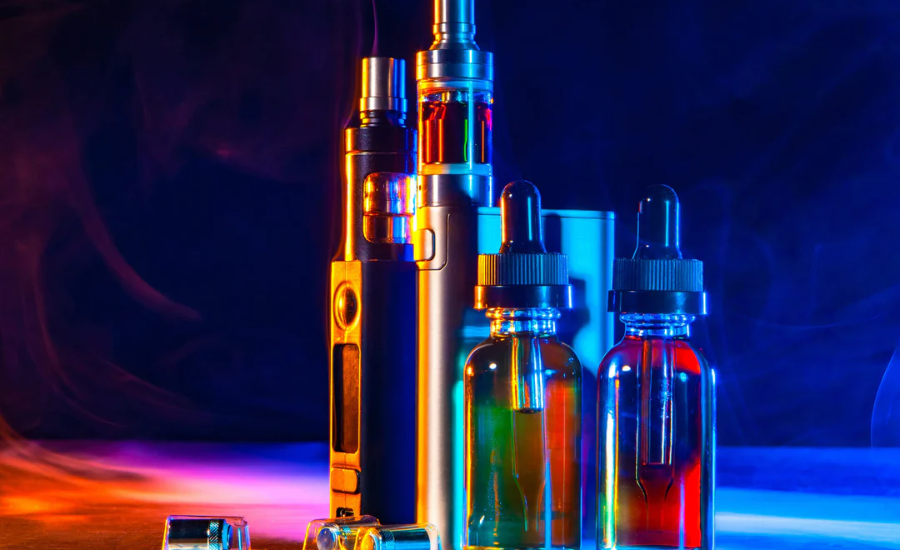E-cigarettes, also known as vapes, have exploded in popularity, particularly among young adults. While often marketed as a “safer” alternative to traditional cigarettes, the long-term health impacts remain a complex and evolving picture. One key focus of this discussion is the nicotine content of e-liquids, the substance responsible for addiction, and many of the associated health concerns. This blog dives deep into the impact of nicotine levels in e-liquids, exploring the science, potential risks, and ongoing debates surrounding this crucial element.
Demystifying Nicotine: Understanding the Addiction Factor
Nicotine is a highly addictive substance found naturally in tobacco plants. It acts on the brain’s reward system, creating a pleasurable feeling and promoting dependence. E-liquids come in a wide range of nicotine levels, typically measured in milligrams per millilitre (mg/mL). These can range from nicotine-free options to extremely high concentrations exceeding even traditional cigarettes.
Understanding the different nicotine strengths:
- Low: 3mg/mL or less – Similar to “light” cigarettes
- Medium: 6mg/mL – Comparable to regular cigarettes
- High: 12mg/mL or more – Exceeds most cigarette nicotine levels
Exploring the Health Concerns: Unraveling the Web of Potential Risks
Higher nicotine levels in e-liquids raise several potential health concerns, particularly for developing brains and vulnerable populations:
- Addiction: High nicotine levels increase the risk of addiction, especially for young users whose brains are still developing. This can lead to dependence and difficulty quitting, potentially paving the way for future tobacco use.
- Brain Development: Nicotine exposure can negatively impact cognitive function, memory, and learning in adolescents and young adults. Its impact on the developing brain is a significant concern.
- Cardiovascular Risks: Nicotine can elevate blood pressure, and heart rate, and increase the risk of heart attacks and stroke, similar to traditional cigarettes.
- Respiratory Issues: While generally considered less harmful than smoking, some studies suggest e-cigarettes may still irritate the lungs and contribute to respiratory problems.
Weighing the Evidence and Addressing Misconceptions
The debate surrounding the health impacts of e-cigarettes, particularly about nicotine content, is ongoing.
Arguments for regulation:
- Public health concerns surrounding addiction, particularly among young people.
- Lack of long-term data on the potential health risks.
- Need for stricter regulations on nicotine content and marketing practices.
Arguments against regulation:
- May be a harm reduction tool for smokers looking to quit traditional cigarettes.
- Personal choice and freedom argument for adults.
- Lack of conclusive evidence on long-term health effects compared to smoking.
Striking a Balance: Finding Responsible Solutions
While the debate continues, some key takeaways emerge:
- High nicotine levels in e-liquids pose potential health risks, particularly for vulnerable populations.
- Regulation may be necessary to protect public health, especially by limiting high-nicotine options and restricting marketing to young people.
- Further research is crucial to fully understand the long-term health effects of e-cigarettes and inform future policies.
Ultimately, understanding the impact of nicotine levels in e-liquid is crucial for individuals making informed choices, policymakers crafting regulations, and researchers seeking definitive answers. As science evolves and the debate continues, navigating this complex issue requires a balance of evidence-based information, responsible consumption, and continued research efforts.
Additional Points to Consider:
- Individual factors: Age, health status, and pre-existing conditions can influence the risks associated with nicotine exposure.
- Dual use: Using both e-cigarettes and traditional cigarettes may negate any potential health benefits of switching.
- Quitting options: Resources and support are available to help individuals quit vaping and tobacco use altogether.
By exploring the complexities of nicotine levels in e-liquid, we can move towards a more informed and responsible approach to this evolving technology, prioritizing public health and individual well-being.













